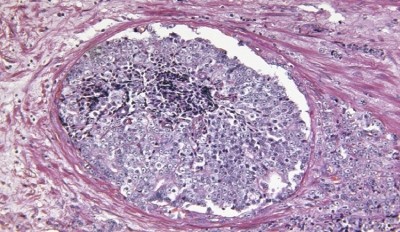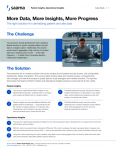Berg taps into supercomputer to battle COVID-19 variants

Several COVID-19 vaccines have been approved and administered to millions of people around the globe. Since the virus’s arrival, researchers also have been on the hunt for drugs that can effectively battle the disease in patients that receive a positive diagnosis.
Berg, a company that uses proprietary artificial intelligence (AI) tech to identify and pursue potential drug candidates, recently used its proprietary AI model to pinpoint drugs that could be repurposed to combat the numerous COVID-19 variants that have popped up around the world.
With the help of the famed Summit supercomputer at Oak Ridge National Laboratory, the researchers identified nodal host proteins potentially connected to 18 chemical compounds, some already being marketed. This discovery gives researchers the opportunity to rapidly “triage” the assets to determine their efficacy and safety against the COVID-19 variants.
Outsourcing-Pharma recently connected with Dr. Niven R. Narain, cofounder, president and CEO of Berg, who walked us through the research findings, and the potential implications for the future of COVID-19 treatment.
Narain explained that while the discovery, approval and circulation of the COVID-19 vaccines might be welcome news, the vaccines and currently in use treatments might not work for everyone. What’s more, the emergence of virus variants (to date in the UK, Brazil, and South Africa, with more likely to pop up in the coming months), is leading to new cases and higher death rates.
“The variant emergence in the world has been a battle with vaccine rollout, and we’re balancing a ‘sense of security' for those who have had the vaccine,” he advised. “We are in a race against variants vs. vaccination, but unfortunately full evidence of variant protection is still emerging on the approved vaccines.”
The Berg team harnessed its AI technology, a Bayesian analytical model, and the Summit computer to pinpoint nodal host proteins and the 18 chemical compounds. Now, researchers are working on validation of the targets, and screening a total of 1.2b different materials to discover potential treatments for the COVID-19 virus.
Since COVID-19 landed on the global scene more than a year ago, Berg has tackled a number of research projects centered on the virus. In September, OSP shared news of a study Berg contributed to which showed the elevated infection rate and severity of COVID-19 in African-American patients is likely tied to a genetic factor, and that ACE inhibitors and ARBs could be useful in treating the disease.
While researchers around the world continue to make progress on COVID-19 discoveries with the resources at their disposal, the capability of the Summit supercomputer is somewhat special.
“The novelty of what was combined with the Oak Ridge supercomputer and Berg's Biology/AI capability really is a special occurrence; its unique approach driven by the raw power is unfortunately not able to be replicated with inferior approaches,” he commented. “The Summit computer uses the power and speed of 1m laptops—hence, one could combine the core elements of approach and philosophy, but the material advantage is speed, knowhow, and the synergy of Berg and Oak Ridge.”
As has been the case with many of the projects aimed at the development of vaccines and COVID-19 treatments, Narain said, the partnership between Berg and the Summit team at Oak Ridge (which OSP first shared with readers in June) has underscored the importance of teamwork among researchers and developers.
“The importance of collaboration is number one,” he commented. “There’s no way we, Berg, would have gotten here without Oak Ridge.”
And, Narain told us, collaboration (among government agencies, pharmaceutical firms, research institutions, and companies like Berg) likely will continue to be a key ingredient in future recipes for treatments to fight COVID-19, as well as viruses and diseases yet to emerge.
“We must be prepared for the next types of viruses or insults of this nature,” he said. “The Berg/Oak Ridge relationship is the hallmark of what the future should look like.”


















